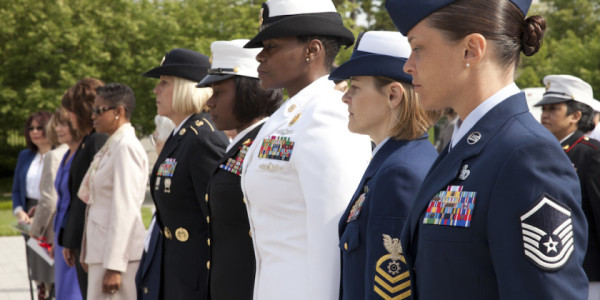

When I was a young Marine on my first tour in Iraq’s Anbar province, I met then-Lance Cpl. Gabby Altamira. Not only were we both boots, we were also augmented from a different unit, so naturally we were the first ones to be “voluntold” to go on security duty when the time came. I spent a few weeks guarding an empty desert in western Iraq for a few weeks, and Altamira ended up doing something far more impactful.
On Dec. 15, 2005, millions of eligible voters in Iraq cast ballots for the first time since the 2003 invasion to choose members of the Council of Representatives, a 275-seat parliamentary body tasked with governing the war-rattled nation. Despite reports of “scattered violence,” “the turnout was remarkable” and Dec. 15 was considered “a good day for Iraq.”
This definitely would not have been the case had it not been for the contribution of Altamira and several other female Marines in the newly mintedLioness program.
The program’s roots came from a combination of a large female population in Iraq,around 17 million, and cultural norms that prevent men from close engaging with Iraqi women. In order to secure the33,000 polling stations in Iraq, female Marines attached to combat units to provide additional security by patting down prospective voters — often finding themselves in harm’s way during their missions. Yet, stories like this are often ignored when the debate over women in combat comes up.
related: TIMELINE: A History Of Women In The US Military »
It’s shocking that, despite beingthe fastest growing veteran population, totaling more than 2.2 million, too many female veterans feel they are “invisible.” What is not shocking, though, is that a population that feels invisible doesn’t get the care they have earned and deserved. Womens clinics at the Department of Veterans Affairs“are sometimes located in basements or obscure corners of the buildings, without adequate signage” according to Helen Thorpe, author of “Soldier Girls,” and, nationwide, “nearlyone in four VA hospitals does not have a full time gynecologist on staff.”
This is unacceptable.
We know that “women have health care needs that are distinct from men; cardiovascular disease, for example, plays out differently in the female body.” And according to the Department of Veterans Affairs, we know that female veterans are younger, on average, than their male counterparts. Female vets are also at a 50% higher risk of unemployment than their non-veterans peers. And between 2000 and 2009, the number of female veterans using VA health care has increased by 83%.
Not knowing about the contributions and challenges faced by servicewomen and veterans is no longer an excuse. The question now is what do we plan to do about it?
The VA, to be sure, has had its problems in the past, but is seeking out corrections to its deficiencies surrounding female veterans’ care and has launcheda social media awareness campaign, aWomen Veterans Call Center, and has more hires with expertise in women’s health, however, the burden is not the VA’s alone. It’s up to servicemen and male veterans to also champion the successes and challenges that our sisters-in-arms endure.
“One team, one fight” was instilled in me as a young Marine and I would not be living up to that creed if I believed my sisters’ fight was theirs alone.
